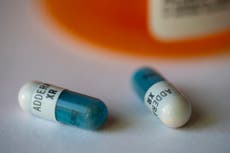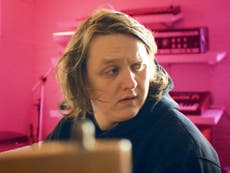The Independent's journalism is supported by our readers. When you purchase through links on our site, we may earn commission.
‘Manic pixie dream girl’: Why the trope isn’t just insulting – it’s dangerous
When I say ‘I’m not like other girls’, I mean it. I’m referring to being autistic and ADHD, writes Charlotte Colombo


Your support helps us to tell the story
From reproductive rights to climate change to Big Tech, The Independent is on the ground when the story is developing. Whether it's investigating the financials of Elon Musk's pro-Trump PAC or producing our latest documentary, 'The A Word', which shines a light on the American women fighting for reproductive rights, we know how important it is to parse out the facts from the messaging.
At such a critical moment in US history, we need reporters on the ground. Your donation allows us to keep sending journalists to speak to both sides of the story.
The Independent is trusted by Americans across the entire political spectrum. And unlike many other quality news outlets, we choose not to lock Americans out of our reporting and analysis with paywalls. We believe quality journalism should be available to everyone, paid for by those who can afford it.
Your support makes all the difference.I’m not like other girls. And no, I don’t mean that I prefer friendships with men because they’re “less drama,” that I’m “low maintenance” in a relationship, revel in being “the cool girl” or pair Converse trainers with formal dresses.
When I say I’m not like other girls, I’m referring to being autistic and ADHD – a diagnosis which is currently (and regularly) in the spotlight following the airing of the Panorama documentary: Private ADHD Clinics Exposed.
What ADHD means to me is that at 25 years old, I still struggle to write, use a knife and fork, or eat anything other than the same three beige foods I deem “safe”. It means I find it hard to keep eye contact or add inflations to my voice. An especially loud motorbike or fire alarm could ruin my day, and if I have two social plans in a row, I need three days locked in my room speaking as little as physically possible in order to “recover.” But that’s a lot less sexy than being “not like other girls”.
It’s only in the past few years that neurodiversity in females has been acknowledged as existing, let alone studied. But there are two things we know for sure: firstly, that traits associated with ADHD and autism often that present differently in assigned females at birth (AFABs) than they do for assigned males.
Secondly, that there exists a huge diagnostic gap between males and females when it comes to being assessed for these conditions. In the past few years, especially, what we’re seeing is women and AFABs largely playing catch-up with adult diagnoses after a lifetime of being overlooked.
But as femme-presenting autism and ADHD grows in prominence, so does the realisation that neurodiversity in women is impossibly entangled with misogyny. If a young boy shows traits of autism or ADHD, they become known as “a tortured genius” or that Tom Sawyer-like scamp you can’t help but love. But when a young girl does the same, they’re just “weird”. It’s just not a thing that’s accepted. Society isn’t built in a way to even comprehend women standing out; we’re conditioned, without even realising, to take up less space than men.
So, people like me spend years masking and suppressing our neurodivergent traits, which leads to a vicious cycle where we don’t end up getting the diagnoses we need until later in life — and even then, we face barriers like medical misogyny, with male doctors feeling less inclined to believe us. Perhaps this isn’t surprising, when you consider that the only framework for neurodiversity they have to work with is one heavily skewed towards males, because they simply don’t face the same pressure as women do to mask.
But things are better now, right? Neurodivergent women are getting more representation, and many of us feel able to show our autistic and ADHD traits freely? Well, no. Not exactly.
It all started falling in place for me when I read Fern Brady’s memoir, Strong Female Character. The comedian, who was diagnosed as autistic in adulthood, recounted how a male doctor dismissed her autism diagnosis on account of her having had boyfriends.
“Either he thought all autistic people are unattractive sea monsters with no interest in forming meaningful relationships, or he mistakenly assumed that the men I dated were capable of picking up on my autism rather than seeing it through a ‘manic pixie dream girl’ lens,” she wrote. Brady then went on to describe how a man once called her a “gorgeous weirdo,” which she knew “instinctively” was a good thing because “the gorgeous part would cancel out any potential discomfort with the weirdo part.”
Reading these lines, I was forced to look back and reflect on my own life, at how exactly I unmasked, and to what extent my being “openly” autistic was dictated by this same misogyny. At university and sixth form, I enjoyed being the “quirky” one, and I enjoyed the validation I got from it, too. I’d be upfront about being neurodivergent, but at the same time be conscious of ensuring that this neurodiversity was conveyed in a very specific way. I’d be blunt and upfront, sometimes making unusual observations or out-of-pocket jokes, but only in a way that I knew would be endearing.
I thought I was setting myself free, granting myself permission to be a little bit more “out there,” but the truth is, I was masking just as hard then as I did as the years I spent as the oddly quiet girl at school. I remained terrified of being seen as an “other” or an “outcast”, but instead of performing the part of a neurotypical, I had switched to performing the part of a heavily romanticised and filtered version of autism — one which I knew, deep down, was more likely to be accepted by society and be rewarded with validation.
Realising that I played into this “manic pixie dream girl” stereotype was a hard pill to swallow, but it didn’t take me long to realise I was not alone. Along with Fern Brady’s book, I found several viral TikToks, with millions of views each, of neurodivergent women joking and sharing experiences of how men interpreted autism and ADHD traits as part of the “manic pixie dream girl” persona of mismatched outfits and funny catchphrases. What they were ignoring were the less palatable aspects of neurodiversity.
It was then that I realised it was a systemic problem, and just a further example of neurodivergent women remaining bound by this innate need to perform. With neurodivergent women quite literally being “not like other girls”, it’s all too easy for us to be stereotyped and reduced to the “manic pixie dream girl” persona. But this reduces us to a two-dimensional romantic fantasy.
This needs to change. If the recent Panorama documentary shows us anything, it’s that neurodivergent people will never be truly accepted and embraced by wider society in the way we want to.
And I’m tired of having to play up to this very specific ideal of what neurodiversity looks like, because the truth is, a lot of times, being neurodivergent can be very unsexy. It can be meltdowns, crying fits, self-neglect, depression: the full spectrum of human emotion.
And after masking and surviving for all this time, if there’s one thing neurodivergent women are entitled to, it’s the right to be themselves.



Join our commenting forum
Join thought-provoking conversations, follow other Independent readers and see their replies
Comments